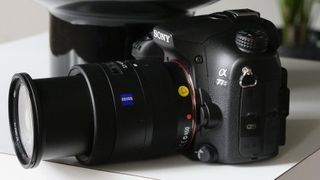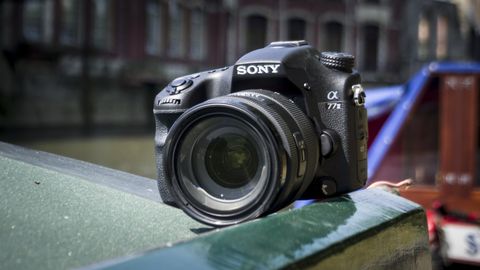Why you can trust TechRadar
Sony currently has a strong reputation for sensor design and image processing and the Alpha 77 II does nothing to diminish that. Even at the highest selectable sensitivity setting, ISO 25,600, noise is controlled well in raw files, having a fine texture with no banding or clumping visible at 100% on-screen. With careful processing it is possible to conceal most of the coloured speckling in raw files to produce an image with just luminance noise, giving some grain.
Simultaneously captured JPEG files look softer than their raw counterparts, and close examination reveals a painterly texture with some smudging of detail and slightly sharpened edges. They generally look acceptable when viewed at A3 size, but I prefer the slightly sharper, grainer look of the raw files.
As you'd hope with a 24Mp sensor, the A77 II is capable of recording a high level of detail at the lower sensitivity settings.

My first impressions of the Alpha 77 II's autofocus system were good so I used it the camera to photograph a gig in very low, flat light. For comparison I took along the Canon 5D Mark III. Both cameras had a 70-200mm f/2.8 lens mounted, although the focal length magnification factor of the A77 II meant it wasn't necessary to zoom so far in as with the Canon camera.
The flat light proved a challenge for both cameras, but the Canon was able to cope just a little bit better. Nevertheless, the Alpha 77 II managed to get the moving subjects sharp most of the time and wasn't too far behind the much more expensive full-frame Canon.
As I was shooting continuously in short bursts I found it best to turn the image review off, as this gave me a full-time view of the subject through the lens. The downside of this is that you don't see the image after it's captured and the gain that is applied to the viewfinder's image when its brightness is set to 'Automatic' can make the image look brighter than it is. Consequently, in low or changing light it's best to set the EVF's brightness to 'Manual'.
While the A77 II's AF system struggled a little in the low, flat light of the unilluminated gig, there were no such problems with a fast moving subject in good light. It was positive, fast and accurate. In continuous AF mode with AF selection set to Expanded Flexible Spot, it got fast moving rowers sharp in a flash and was able to keep them sharp using the surrounding points as I panned with their movement. When Af selection was set to Lock-on AF: Flexible Spot or Lock-on AF: Expanded Flexible Spot it also tracked them around the frame if I failed to keep the original AF point in the correct location.

As usual, AF performance varies depending upon the lens that's mounted and a good optic is required to get the best from the Alpha 77 II. It perfroms very well with the 70-200mm f/2.8 for example, but is a little more hesitant in low light with the 85mm f/2.8 – which also has a much noisier focus mechansim.
Throughout my testing of the Alpha 77 II I used the Multi-segment metering system and, despite shooting in a wide range of conditions, there were only a few where I had to dial in a little exposure compensation. The system isn't easily thrown by large bright or dark areas within the scene.
Colours are also good straight from the camera, and the white balance system generally does a good job when set to the Automatic setting.
Current page: Performance
Prev Page Build quality and handling Next Page Image quality and resolution
